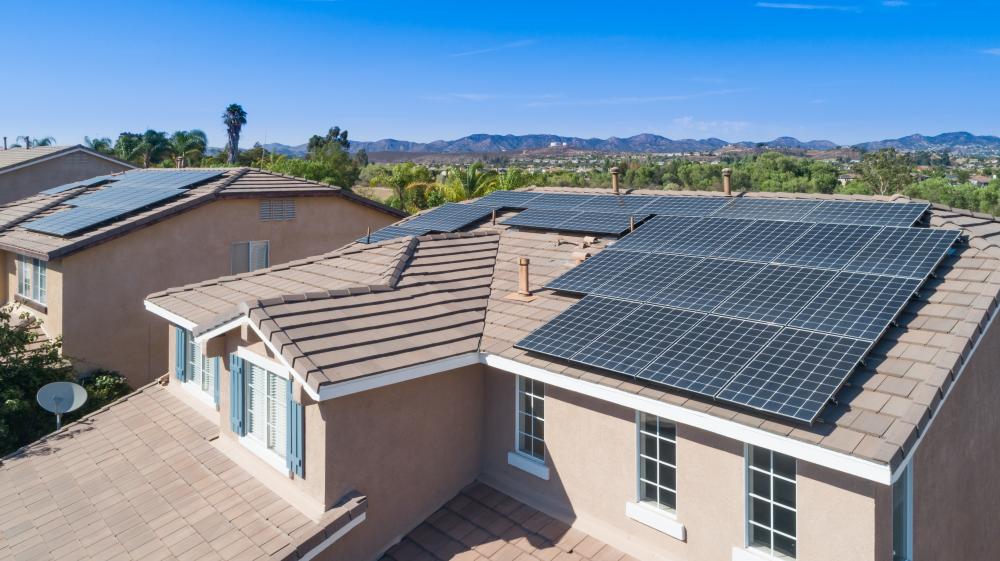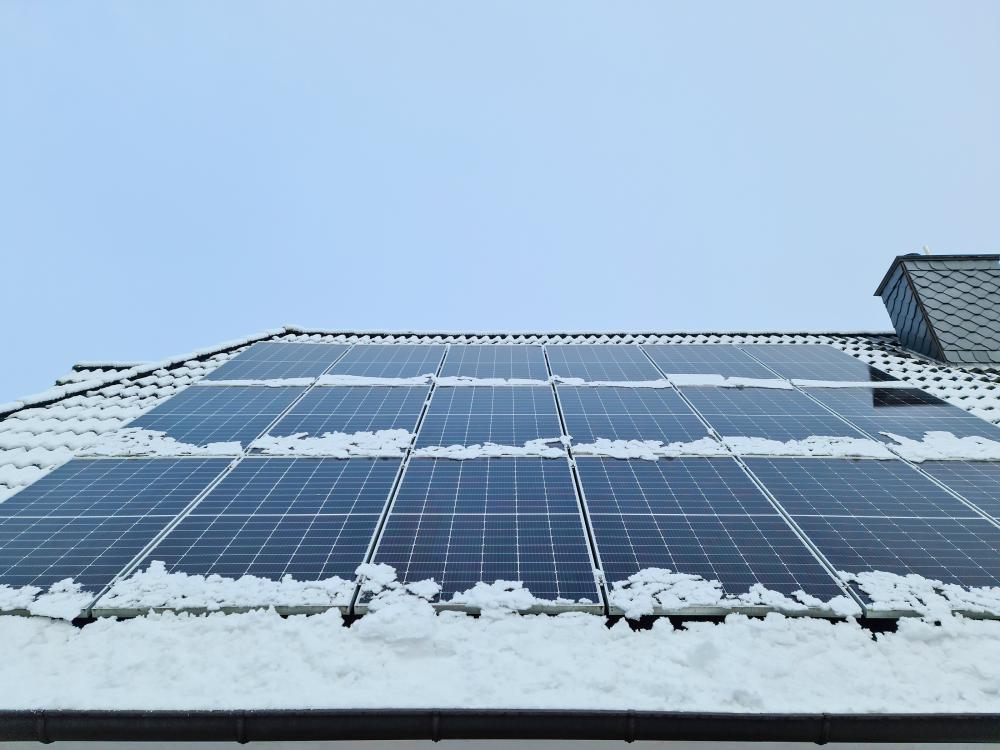Grid Tie Solar Electric Systems

Introduction to Grid-Tie Solar Electric Systems
At Willdurness LLC, our dedication to modernizing homes extends beyond mere aesthetics. We firmly believe in the transformative power of integrating sustainability into everyday living. Among our proudest offerings are grid-tie solar electric systems, a cornerstone of our commitment to a greener future. These systems not only elevate the value of residential properties but also contribute significantly to reducing carbon footprints.
Why Choose Grid-Tie Solar Electric Systems?
One might wonder, out of all the sustainable solutions available, why we emphasize grid-tie solar electric systems. The answer lies in their efficiency and symbiotic relationship with the electrical grid. Unlike standalone systems, grid-tie solar electric systems allow homeowners to feed excess power back into the grid, often resulting in credit from utility companies. This reciprocal exchange not only optimizes energy usage but also ensures a fail-safe during lower production periods.
Moreover, our commitment at Willdurness LLC to these systems reflects a broader mission: to advocate for and implement solutions that are viable today and beneficial tomorrow. By adopting solar technology, we empower homeowners to take control of their energy production and contribute to a sustainable energy future.
Understanding How Grid-Tie Solar Electric Systems Work
At its core, the operation of grid-tie solar electric systems is elegantly simple. Solar panels convert sunlight into electricity. This electricity, however, is in a form (DC) not compatible with most home appliances or the grid (which uses AC). Herein lies the role of the inverter, a critical component of the system, which converts DC into AC. Once converted, this electricity is ready to be used by the home, with any surplus being sent back to the grid. This interconnection with the grid ensures that energy is neither wasted nor insufficient at any given time.
Economical Aspects of Grid-Tie Solar Electric Systems
Discussing the financial aspects of grid-tie solar electric systems, it's important to highlight their long-term cost-effectiveness. Initial investment notwithstanding, the reduction in utility bills coupled with potential earnings through net metering presents an appealing return on investment. At Willdurness LLC, we've witnessed firsthand the delight of clients who've made the switch and reaped the benefits.
It's paramount, however, to consider individual circumstances when evaluating the cost-effectiveness of these systems. Factors such as geographic location, available sunlight, and local utility policies play a crucial role in determining the overall savings and payback period. Our experts at Willdurness LLC are adept at navigating these variables to optimize the benefits for our clients.
DIY vs. Professional Installation
In the realm of grid-tie solar electric systems, the debate between DIY and professional installation is a notable one. On one hand, the DIY approach can significantly reduce initial costs and offer a rewarding learning experience. On the other, professional installation guarantees expertise, efficiency, and often, a more seamless integration with local utility grids. At Willdurness LLC, while we appreciate the enthusiasm of DIYers, we strongly advocate for professional installation to ensure the longevity and efficiency of the system.
That said, we also understand the appeal of taking matters into one's own hands. Hence, we offer advisory services for those opting for DIY installation, providing guidance on best practices and compliance with local codes and regulations.
Selecting the Appropriate Grid-Tie Solar Electric System
Selection of the right system is paramount. Factors such as roof space, energy requirements, and budget constraints must be thoroughly evaluated. Here at Willdurness LLC, we pride ourselves on our consultative approach, working closely with our clients to identify a system that not only meets their energy needs but also aligns with their financial plans.
Our portfolio encompasses a variety of grid-tie solar electric systems, ensuring that we have a solution for virtually every scenario. Whether it's a compact urban home seeking to reduce its carbon footprint or a sprawling rural property aiming for energy self-sufficiency, our tailored solutions embody our commitment to sustainability and client satisfaction.
Integration with Solar Battery Storage
The synergy between grid-tie solar electric systems and solar battery storage has become a game-changer in the solar industry. This combination not only provides energy independence but also ensures uninterrupted power supply during grid outages. At Willdurness LLC, we've embraced this technology, offering integrated solutions that cater to the increasing demand for resilience and self-reliance.
However, the decision to add battery storage is nuanced, influenced by factors such as geographic vulnerability to outages, financial considerations, and personal preferences regarding energy independence. Our team is adept at navigating these considerations, ensuring that our clients make informed decisions that reflect their values and lifestyle.
Environmental Impact and Sustainability
Embarking on the journey of installing grid-tie solar electric systems is not just a financial investment but also a profound environmental commitment. By harnessing the sun's power, we diminish our reliance on fossil fuels, reduce greenhouse gas emissions, and contribute to a healthier planet. This aligns seamlessly with our ethos at Willdurness LLC, where sustainability is not merely a buzzword but the foundation of all our endeavors.
We encourage our clients to view solar adoption not just as an upgrade to their property but as a conscious step towards environmental stewardship. Through our collective efforts, small and significant, we believe in making a tangible difference in our world.
Embracing the Solar Revolution with Willdurness LLC
In conclusion, grid-tie solar electric systems represent more than just a technological advancement; they are a testament to the potential of renewable energy to revolutionize our daily lives. At Willdurness LLC, our mission extends beyond the installation of these systems. We aim to educate, inspire, and empower our clients to join us in the green revolution.
Whether you're motivated by the financial savings, the environmental benefits, or the pursuit of energy independence, we are here to guide you every step of the way. Together, let's harness the power of the sun to create a sustainable, thriving future for generations to come.

What are the disadvantages of grid-tied solar systems?
While grid-tied solar systems bring numerous benefits, it's essential to consider a few drawbacks. Firstly, they rely on the presence of the electrical grid to function. During an outage, a standard grid-tied system will not provide power due to safety regulations, leaving you without electricity despite having solar panels. Secondly, the initial cost can be a barrier for some. Although costs have decreased over the years, the upfront investment in solar panels, inverters, and installation still requires careful financial planning. Lastly, navigating through local regulations and securing the necessary permits can be a complex and time-consuming process. However, at Willdurness LLC, we guide our clients through these challenges, ensuring a smooth transition to solar energy.
How much does a grid-tied solar system cost?
The cost of a grid-tied solar system varies widely based on several factors, including the size of your home, your energy needs, and the specific equipment chosen. On average, homeowners might expect to invest anywhere from $15,000 to $25,000 before any tax credits or incentives. While this might seem steep, it's important to remember the long-term savings on utility bills and the potential increase in your property's value. Plus, various federal, state, and local incentives can significantly reduce the net cost. At Willdurness LLC, we pride ourselves on our ability to work within our clients' budgets, finding the most cost-effective solutions that meet their energy needs.
Can I install my own grid-tie solar system?
Technically, yes, you can undertake a DIY installation of a grid-tie solar system. It's an ambitious project that requires a good understanding of electrical systems and local regulations. However, while a DIY approach can save on labor costs, it's crucial to consider the benefits of professional installation. Professionals ensure that the system is efficiently integrated into your home and the grid, adhering to all safety standards and regulations. At Willdurness LLC, we respect the DIY spirit, offering advisory services for those who choose this path, while strongly advocating for professional installation to maximize the system's efficiency and safety.
Which is better: grid-tie or off-grid solar system?
The choice between grid-tie and off-grid solar systems depends on your specific needs, location, and energy goals. Grid-tie systems are ideal for those who have reliable grid access and want to reduce their carbon footprint and utility bills without completely cutting ties with the utility grid. Off-grid systems suit those in remote locations without reliable grid access or those seeking complete energy independence. However, off-grid systems typically require a more significant initial investment in batteries and a more substantial system to ensure reliability. At Willdurness LLC, we work closely with our clients to evaluate their energy needs, sustainability goals, and budget to recommend the most suitable solar solution.
How do I select the right grid-tie solar electric system for my home?
Selecting the right grid-tie solar system involves evaluating your energy needs, the solar potential of your property, and your financial goals. Start by looking at your electricity bills to understand your monthly energy consumption. Then, consider the orientation and size of your roof, as well as any shading issues that might affect solar panel efficiency. Budget is also a key factor; it's important to consider not just the initial cost but also potential savings and incentives. At Willdurness LLC, we provide personalized consultations to help our clients choose the system that best fits their needs, ensuring an optimal balance between efficiency and cost.
Is integrating solar battery storage with my grid-tie system a good idea?
Integrating solar battery storage with a grid-tie solar system is becoming increasingly popular, especially in areas with unreliable grid access or high electricity rates. Battery storage can provide energy independence, allowing you to store excess solar power during the day and use it at night or during outages. However, it's important to weigh the benefits against the additional cost. Consider your local utility's net metering policies, your energy consumption patterns, and the frequency of power outages in your area. At Willdurness LLC, we offer expert advice on solar battery storage, helping clients navigate these considerations to make informed decisions about energy storage solutions.
How does installing a grid-tie solar system impact the environment?
Installing a grid-tie solar system has a profound positive impact on the environment. By generating clean, renewable energy from the sun, you're reducing dependence on fossil fuels and lowering greenhouse gas emissions. Solar energy is an inexhaustible resource, unlike coal, oil, and gas, making it a cornerstone for sustainable energy initiatives. At Willdurness LLC, we are committed to helping combat climate change by empowering homeowners to contribute to a greener future. Every grid-tie solar system installed is a step towards reducing the carbon footprint and promoting a healthier planet for future generations.
Resources
- National Renewable Energy Laboratory (NREL) - The NREL is a research organization focused on advancing renewable energy technologies.
- Solar Energy Industries Association (SEIA) - SEIA is a national trade association advocating for the solar industry in the United States.
- U.S. Department of Energy - Solar Energy Technologies Office - The Solar Energy Technologies Office within the U.S. Department of Energy provides information on solar technologies and resources.
- U.S. Environmental Protection Agency (EPA) - Solar Energy - The EPA offers resources on solar energy and its environmental benefits.
